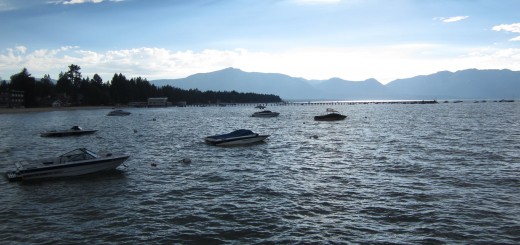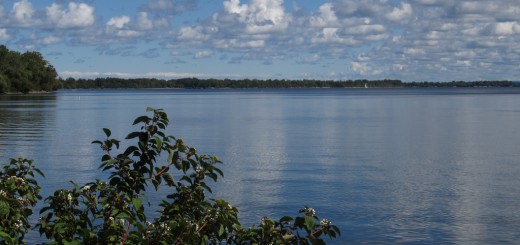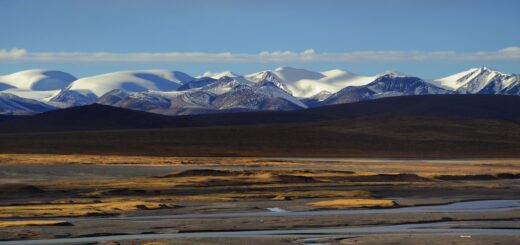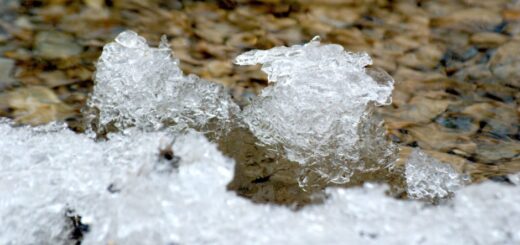Though traditionally thought of as being a time of low productivity, limnologists across the world have started to shift focus toward lake system dynamics during the winter. This change emerges from a variety of studies conducted over the past several decades, research that looks at variables such as temperature, seasonal mixing, ice-on extent and variability, phytoplankton and zooplankton abundances and communities, as well as other environmental drivers that shape the system for the following year.
A 2023 study published in Limnology and Oceanography sampled five Lake Superior stations to assess crustacean zooplankton communities’ phenology. The study observed these dynamics throughout the year and any environmental drivers that could impact zooplankton phenology.
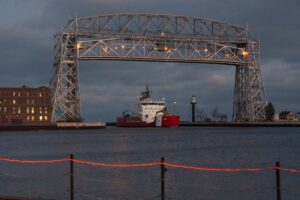
USCGC Mackinaw Entering Duluth Harbor (Credit: Pete Markham via Flickr CC BY-SA 2.0)
The four driving hypotheses of the study were as follows:
- Biotic and abiotic conditions will fluctuate more in shallow, nearshore stations as a result of more variable thermal regimes and terrestrial inputs.
- Zooplankton abundances will be lower in the winter.
- Zooplankton abundances at deeper stations will vary less, season to season, due to more stable environmental conditions.
- Food availability and temperature will be the main drivers for both total zooplankton and densities of the main taxonomic groups across stations and seasons.
Methods
The research focused on zooplankton communities in Lake Superior throughout the year at five nearshore stations at varying depths. Sampling occurred from February 2017 through May 2018, with the most sampling occurring in spring and winter (3-5 times). Each station was sampled once or twice in the summer and sampled only once during overturn in the fall.
Duluth Harbor was the shallowest station, and its location between the St. Louis River and Lake Superior made it the study’s most terrestrially and anthropogenically affected station. Chequamegon Bay was the second most shallow, followed by the Duluth Entry station, which is often impacted by runoff. Madeline Island and McQuade Harbor were the deepest and least terrestrially affected stations. During both of the observed winters, Madeline Island, Duluth Harbor and Chequamegon Bay were ice-covered.
A YSI EXO2 multiparameter sonde was used to measure water temperature, conductivity, dissolved oxygen, total dissolved solids and fluorescent dissolved organic matter. Water column transparency and light attenuation were estimated using a Li-COR meter equipped with an LI-192 Underwater PAR Sensor.
A 3.7-liter sampler was used to collect water from the surface and throughout the water column, stopping 0.5 m above the lake bottom. A 64 μm mesh net with a 0.5 m mouth diameter was used to collect crustacean zooplankton from 1.5 m above the lake bottom. Zooplankton were counted and identified in a Bogorov chamber under a stereoscopic microscope. Adult specimens were separated into three taxonomic groups (calanoids, cyclopoids, and cladocerans) and feeding groups (herbivores, omnivores, and predators).
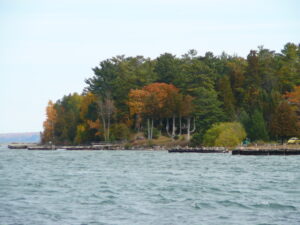
Madeline Island (Credit: Aaron Fulkerson via Flickr CC BY-SA 2.0)
Results
In line with the second hypothesis, zooplankton densities were the lowest in the winter and highest in the summer across all stations. Abundances and community composition were less variable at deeper stations, as proposed by the third hypothesis. Zooplankton dominance varied throughout the year, with cladocerans being dominant in the summer and cyclopoid and calanoid copepods in the fall, winter and spring. As far as feeding groups were concerned, herbivores were abundant in the summer when PAR was high, and omnivores and carnivores dominated in the winter due to a greater variety of food choices.
The main drivers for zooplankton densities were found to be water temperature and food availability, though the effects varied among the taxonomic groups. The study demonstrates the variation in crustacean zooplankton and environmental parameters and affirms the first hypothesis by reflecting the greatest spatial and seasonal variation at shallow stations. Overall, the study highlights the significance of environmental drivers (ice-cover, water temperature, PAR and others) on winter zooplankton dynamics and how increased fluctuation of these drivers will change as climate change worsens.
Source
- Shchapov, K. and Ozersky, T. (2023), Opening the black box of winter: Full-year dynamics of crustacean zooplankton along a nearshore depth gradient in a large lake. Limnol Oceanogr. https://doi.org/10.1002/lno.12355




